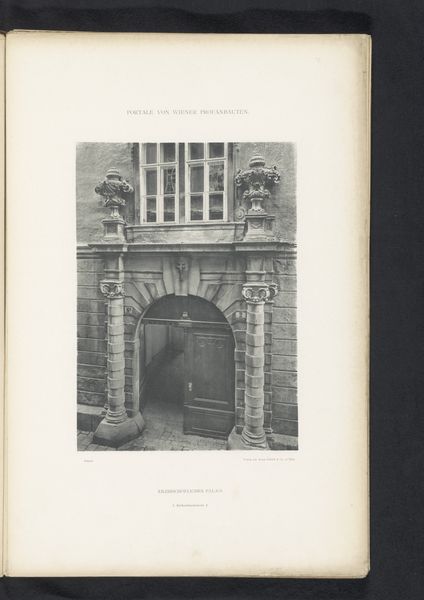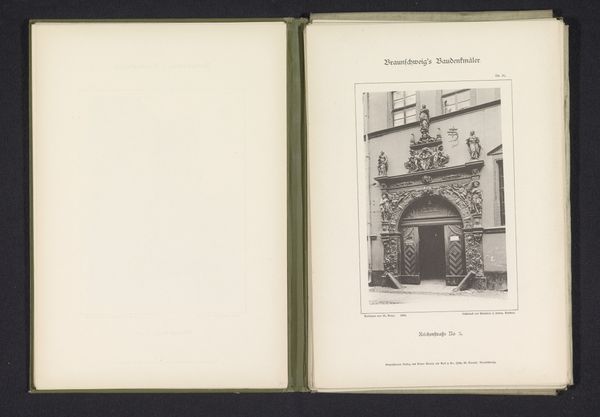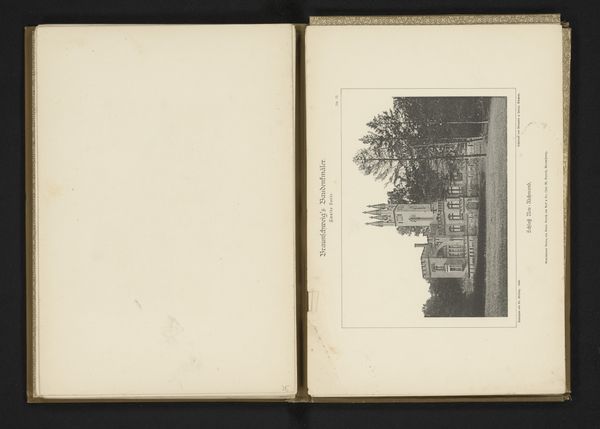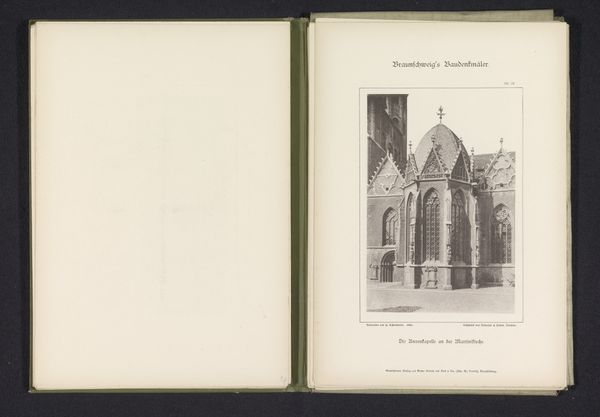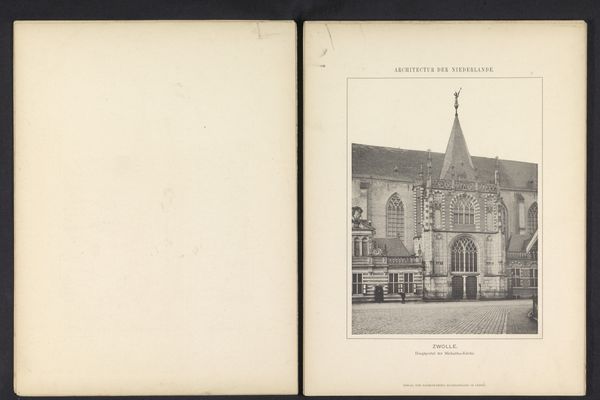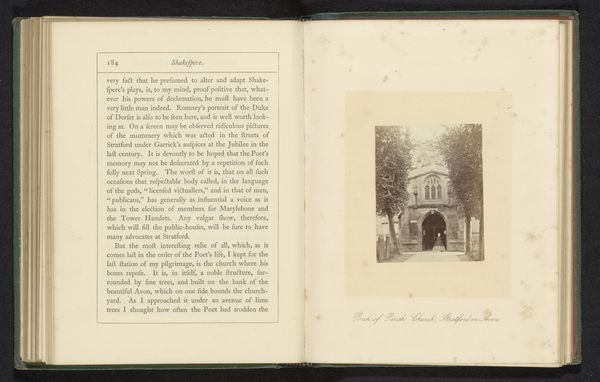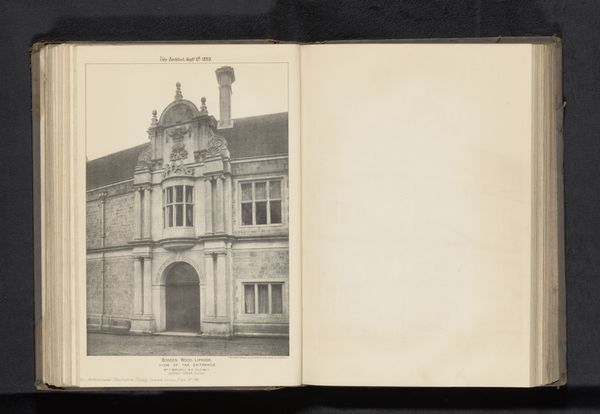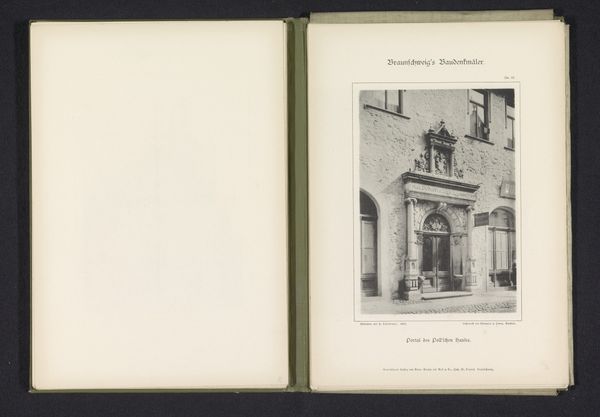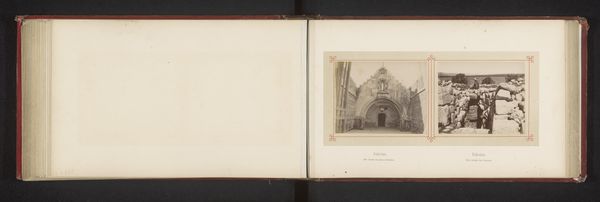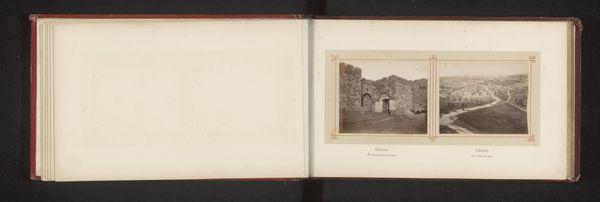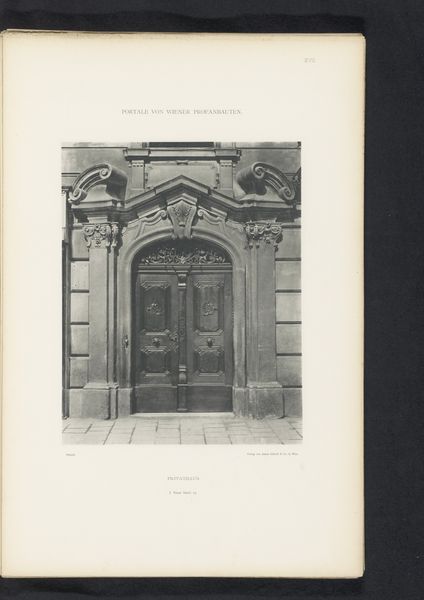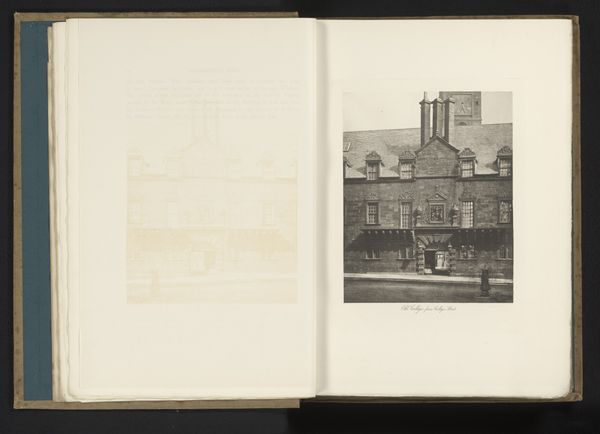
print, photography, architecture
# print
#
german-expressionism
#
photography
#
cityscape
#
architecture
#
realism
#
building
Dimensions: height 149 mm, width 106 mm
Copyright: Rijks Museum: Open Domain
Editor: This is "Toegangsportaal van een woning te Braunschweig," a print from 1893 by J. Schombardt, showing the entrance to a building. It feels very formal, almost like a stage set. I'm drawn to the figures flanking the doorway – what can you tell me about them? Curator: Indeed, the figures and ornamentation point to a specific moment in cultural memory. Think about Braunschweig in the late 19th century – Germany was forging a national identity. Representations of power, status, and local identity were everything. Are you familiar with the "Welfenschloss" – the Welf Dynasty palace in Braunschweig? Editor: Vaguely. I know it was historically significant. Curator: Precisely. These portal figures could be interpreted as deliberately invoking that history and establishing continuity between the new, unified Germany and the region's ducal past. Look at the carvings – do they remind you of anything? Editor: They remind me of Romanesque architectural details. Like simplified caryatids almost? Curator: Good eye! That Romanesque revival hints at deeper roots. Architects often drew upon earlier styles to lend gravitas and legitimacy. Even this *photographic* print participates by granting a sense of "permanence," turning something everyday into a historical document. It captures not just the façade but the era's desire to define itself through selective cultural symbolism. What feeling do *you* think the artist was going for? Editor: That’s a great point; I didn't think about photography being able to grant a sense of importance. Now, knowing this, the architecture itself feels self-important, or assertive, as though wanting to convey power. Curator: And it is by understanding this use of symbolic vocabulary that we begin to understand not just the building but also the mindset of a transformative time. I see now how cultural and historical understanding completely change our appreciation of the work. Editor: I agree; understanding the symbols gives this artwork another layer that I did not consider before.
Comments
No comments
Be the first to comment and join the conversation on the ultimate creative platform.
